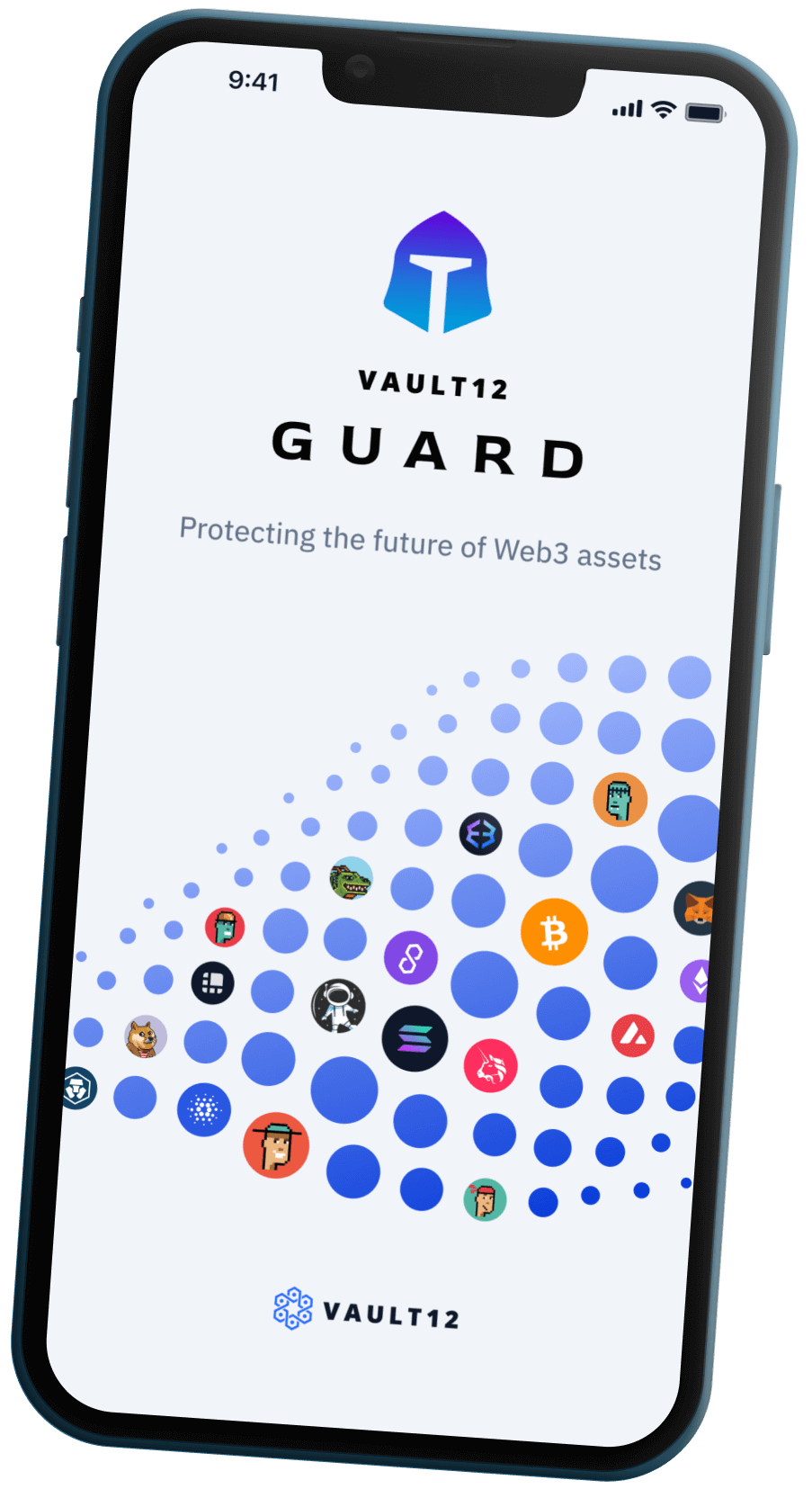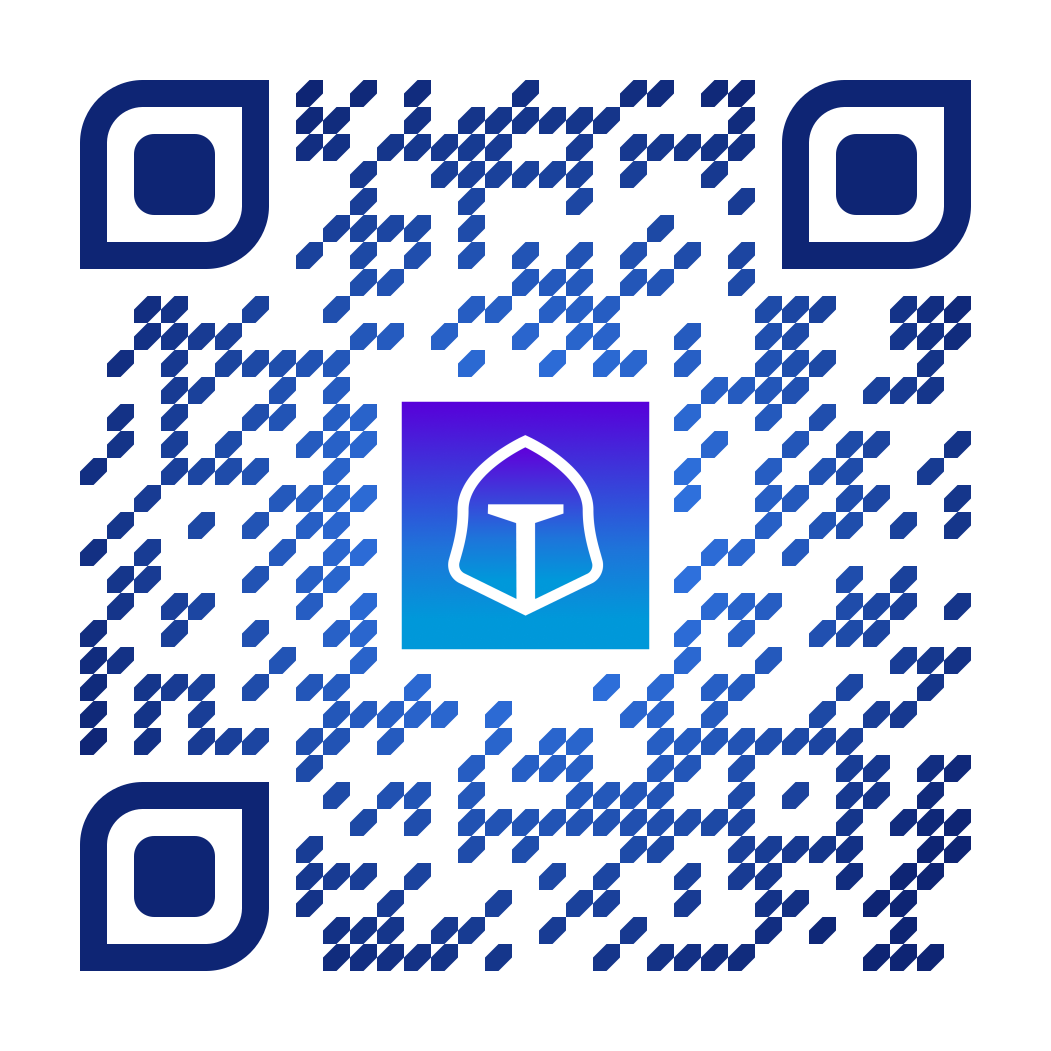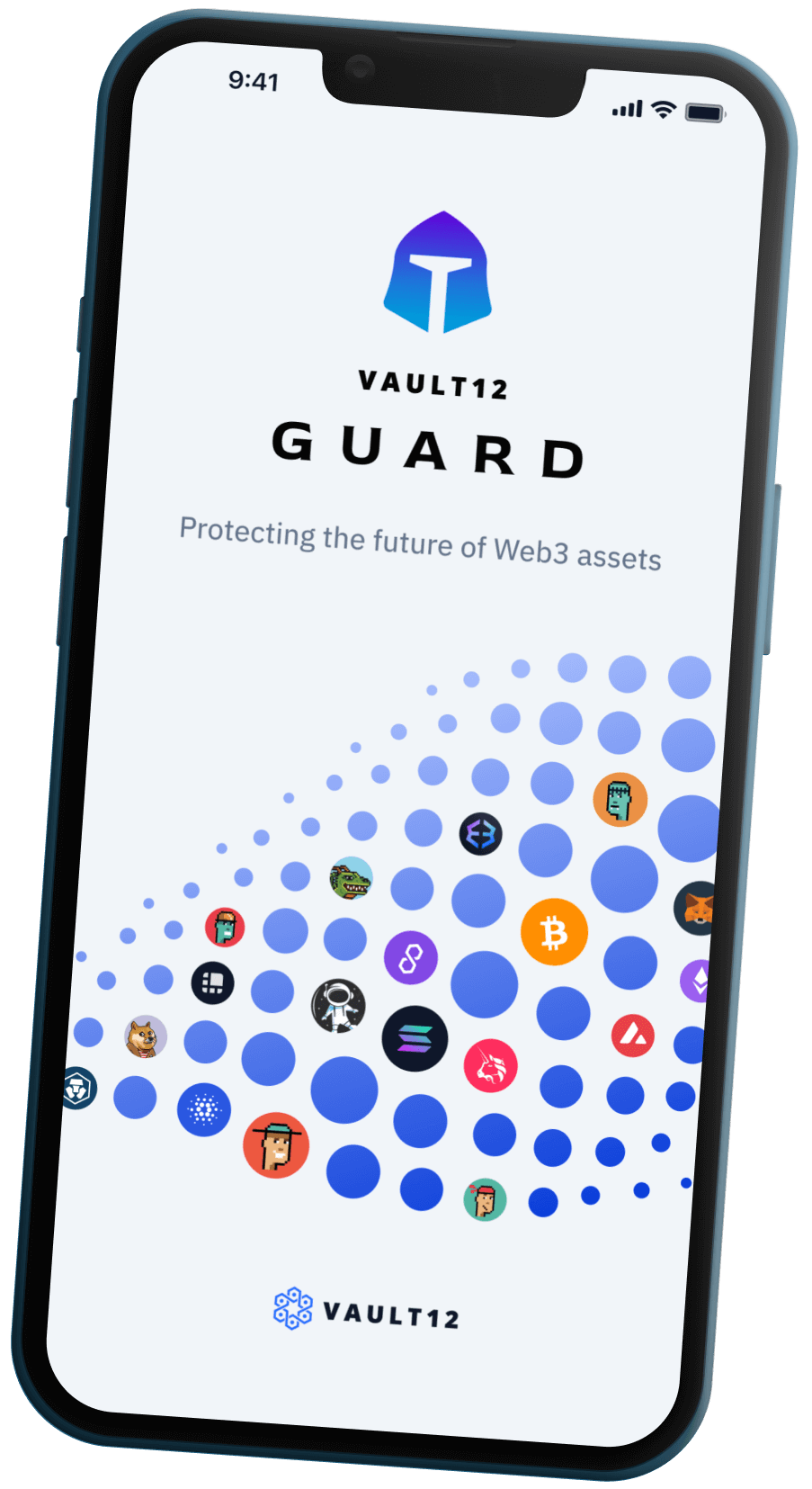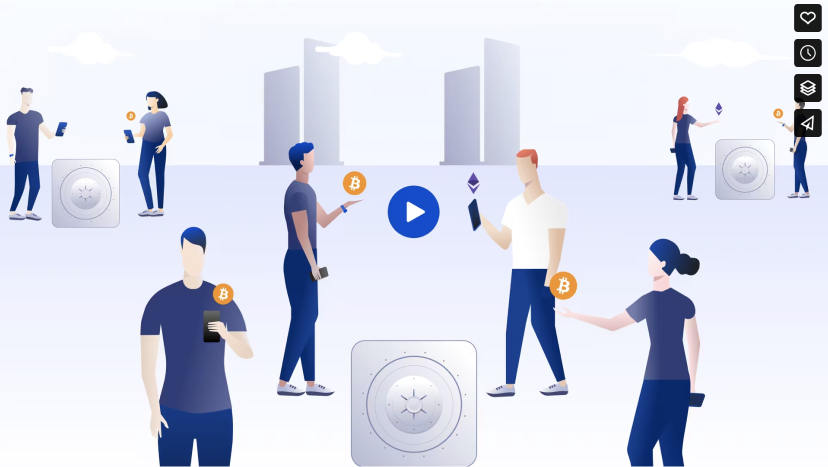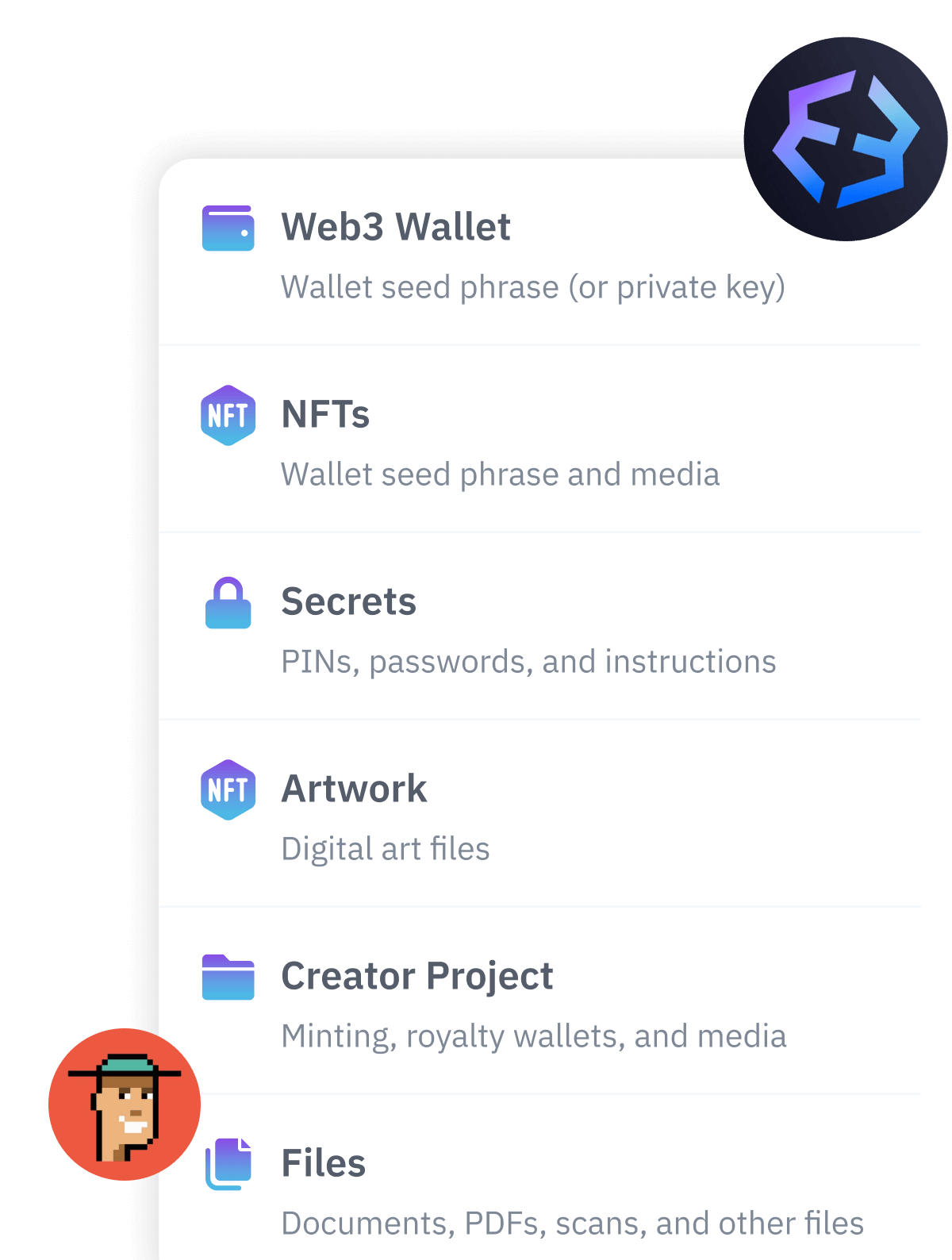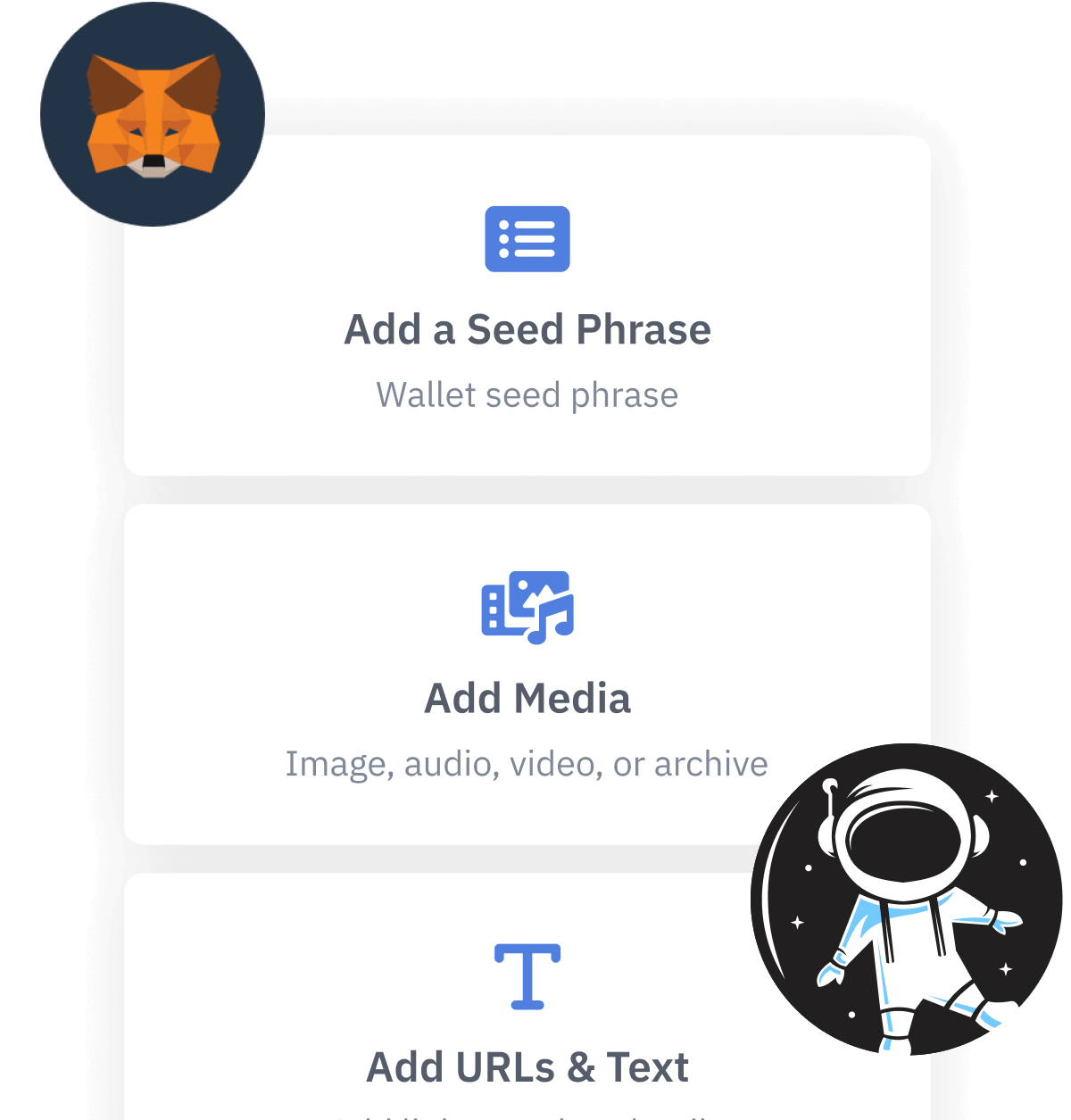Contents
Be careful what you back up to your "brain wallet."
You probably wouldn't want to rely on your memory to back up your life savings, but this article offers tips for how you can remember things like seed phrases more effectively.
Backing up to your "brain wallet" is just a fun way to say you are memorizing your seed phrase and storing it in your mind. An obvious advantage to storing your seed phrase in your brain is immunity from both online and offline attacks. And it's free. But if you have trouble remembering passwords, people's names, or grocery lists, this method is probably not for you.
Human memory can only retain a limited number of unique pieces of information - the average is generally agreed to be about seven things. Since seed phrases have a minimum of 12 words, is storing them in your memory a good idea? Probably not, unless you find yourself in a situation like fleeing across a border to escape war, oppression, or wealth confiscation.
Whether you're in dire straits or you just want the "cool factor" of storing your bags of Bitcoin between your ears, here are some tips to help you do that.
TL;DR (concentrated takeaways)
Our human brains are limited, and we naturally forget things.
Because seed phrases must be random to be secure, do not try to choose a "rememberable" seed phrase!
If you really must remember your seed phrase rather than backing it up, determined practice using memory-training discipline tricks can improve your memory skills. You will need to refer to some form of your seed phrase while you are going through the memorization process (which could take days or weeks).
Some of the tricks (beyond repetition) include physical "anchors," story-creation, and adding mental layers of sense and emotion.
At some point, when you feel you have remembered it as well as you are comfortable with, you would have to securely dispose of the written copy of the seed phrase. Then practice regularly to retain it!
Create a secure Seed Phrase.
Before you choose a seed phrase, check out our article on generating truly random seed phrases here. The human mind is not equipped to create true randomness. Don't use song lyrics or poetry - bots and hackers are constantly trolling the blockchain looking for those, and stealing all the Bitcoin when they find them. Once you have a strong, random seed phrase, temporarily write it down. If you must rely on a brain wallet, you can use one (or all) of the following techniques to commit it to memory.
Memory tricks.
The power of association strengthens memory, and there are clever mental devices that use it effectively. The most popular ones convert words into pictures. Since seed phrase words need to be in the correct order, you can add the dimension of space.
Imagine a room that you know well. Imagine walking into the room and looking left. Notice the first object you see. If it's a framed picture on the wall, associate your first seed phrase word with that framed picture. Let's say your first word is "accident"- you can imagine the glass broken and the picture crooked. Then, scan the room in a clockwise direction. For each new object that you see, attach the next word to it until you have completed the 12 word associations. Now, go back and scan the room, left to right, and see the images of known items combined with the images of your seed phrase attached.
Since it's easier to remember smaller chunks of information, you can use several rooms in a house, with three or six items in each room. Just make sure the rooms flow in order. You can also use the route that you drive to work or school. Attach each successive word in your seed phrase to the next landmark along your well-known route.
Add layers of sense and emotion.
Try to use all of your senses in your imaginary pictures. Adding smells, textures, and sounds to your mental images will increase your memory retention. If you can, add emotions. If you ask a random person on the street where they were on May 24, 2006, they probably have no idea. But if you ask anyone where they were on September 11, 2001, they will usually be able to tell you instantly exactly where they were. The only difference between the two dates is strong emotion. Choose items in your imaginary room that have emotions attached, and link those emotions to your seed phrase word pictures.
Create a story.
While spatial location helps you remember the order of things, you can also increase your memory retention by creating a story that links each word to the next. If your seed phrase starts with "accident, giraffe, dance, list…" Walk into your room in your mind, look left, and see the broken framed picture. You know there's been an accident in this room. Next, you see the chair and a giraffe is sitting in it. The giraffe immediately gets up and starts to dance. Then the giraffe shows you a list of… you get the idea. Your story crates a chain of images that triggers the memory of your phrase.
Repetition.
Remember those human memory experiments I mentioned earlier? Well, they also proved that many spaced, short repetitions are far better for memorization than one long session of trying to commit something to memory. So, practice your room pictures or story with images and emotion several times a day for 2-5 minutes each time. Run the images in order when you first wake up, before eating, and before bed every day. You could also set reminders on your phone to stop and remember your seed phrase several times a day. Just don't let anyone know what you're doing.
Physical anchors.
Neuro-Linguistic Programming (NLP) and other memory-training disciplines use the concept of a physical "anchor." You can do something physically unique and specific while you are studying (or replaying the memory of) your seed phrase; like holding your thumb and first two fingers together. Release your fingers when you finish practicing. Then, when you want to recreate the memory, simply put your three fingers together in the same way and it will trigger your memory. It's best to use some inconspicuous action that won't get noticed. If you lean your head back and put your thumb on your nose, people are going to think you're pretty weird. And, you don't want people to even know you have a seed phrase, let alone that you're trying to remember it.
Destroy the paper.
Having your seed phrase on paper where people can find it makes all the hard work of having it in your brain pointless. Be sure to completely destroy that paper back up. For instance, you could take the paper outside and burn it in a metal or ceramic bowl, then flush the ashes down the toilet.
WARNING!!!
Backing up your seed phrase to your brain wallet is dangerous. If you become injured in a way that affects your memory, your cryptocurrency will be gone forever. If you die, your heirs will never be able to access it. If you can't remember just one word, or if you mess up the order of words, your funds will be gone forever.
If you are not in dire circumstances where memory is your only hope, you will be better off getting a proper cold storage wallet, or relying on some other method to back up your seed phrase.
Be careful what you back up to your "brain wallet."
You probably wouldn't want to rely on your memory to back up your life savings, but this article offers tips for how you can remember things like seed phrases more effectively.

Vault12
Vault12 is the pioneer in crypto inheritance and backup. The company was founded in 2015 to provide a way to enable everyday crypto customers to add a legacy contact to their cry[to wallets. The Vault12 Guard solution is blockchain-independent, runs on any mobile device with biometric security, and is available in Apple and Google app stores.
Vault12 is NOT a financial institution, cryptocurrency exchange, or custodian. We do NOT hold, transfer, manage, or have access to any user funds, tokens, cryptocurrencies, or digital assets. Vault12 is exclusively a non-custodial information security and backup tool that helps users securely store their own wallet seed phrases and private keys for the purpose of inheritance. We provide no legal or financial services, asset management, transaction capabilities, or investment advice. Users maintain complete control of their assets at all times.
You will lose your Bitcoin and other crypto when you die...
...unless you set up Crypto Inheritance today.
It's simple — if you don't worry about crypto inheritance, nobody else will — not your software or hardware wallet vendors, not your exchanges, and not your wealth managers. So it's up to you to think about how to protect the generational wealth you have created, and reduce the risks around passing that crypto wealth on to your family and heirs. What are the challenges with crypto inheritance?
- Crypto Wallets are difficult to use and do not offer crypto inheritance management. In fact, most of them tell you to write down your seed phrase on a piece of paper, which is practically useless.
- Some people back up their wallet seed phrases or private keys on paper, local devices like hardware wallets or USBs, or in the cloud. All of these options have severe drawbacks that range from hacking to accidental loss to disrupted cloud services.
- Software wallets operate on specific blockchains, yet your crypto assets span multiple blockchains. For inheritance to work, you must be able to manage inheritance across every blockchain — now and forever.
Pioneering Crypto Inheritance: Secure Quantum-safe Storage and Backup
Vault12 is the pioneer in Crypto Inheritance, offering a simple yet powerful way to designate a legacy contact and pass on your crypto assets—like Bitcoin (BTC), Ethereum (ETH) and Solana (SOL) —to future generations. Built for everyday users yet robust enough for the most seasoned crypto enthusiasts, Vault12 Guard ensures your wallet seed phrases and private keys are preserved in a fully self-sovereign manner, across all Blockchains.
At the heart of Vault12 Guard is quantum-resistant cryptography and a decentralized, peer-to-peer network of trusted Guardians. Your critical information is never stored in the cloud, on Vault12 servers, or even on local devices—dramatically reducing the risk of a single point of failure. By fusing a powerful software layer with the Secure Element of iOS devices (Secure Enclave) and Google devices (Strongbox), Vault12 Guard locks down your private keys against present and future threats.
Our innovative approach harnesses social recovery, enabling you to appoint one or more trusted individuals or mobile devices as Guardians. These Guardians collectively safeguard your protected seed phrases in a decentralized digital Vault—so there’s no need for constant lawyer updates or bulky paperwork. Should the unexpected happen, your chosen legacy contact can seamlessly inherit your crypto assets without compromising your privacy or security.
Preserve your digital wealth for generations to come with Vault12 Guard—the simplest, most secure way to manage crypto inheritance and backup.
Take the first step and back up your crypto wallets.
Designed to be used alongside traditional hardware and software crypto wallets, Vault12 Guard helps cryptocurrency owners back up their wallet seed phrases and private keys (assets) without storing anything in the cloud, or in any single location. This increases protection and decreases the risk of loss.
The first step in crypto Inheritance Management is making sure you have an up-to-date backup.
The Vault12 Guard app enables secure decentralized backups, and provides inheritance for all your seed phrases and private keys across any blockchain, including Bitcoin, Ethereum, and others, and for any crypto wallet.
Note: For anyone unfamiliar with cryptocurrencies, Vault12 refers to wallet seed phrases and private keys as assets, crypto assets, and digital assets. The Vault12 Guard app includes a software wallet that works alongside your Digital Vault. The primary purpose of this is to guard your Bitcoin (BTC) and Ethereum (ETH) wallet seed phrases, private keys, and other essential data, now and for future generations.


